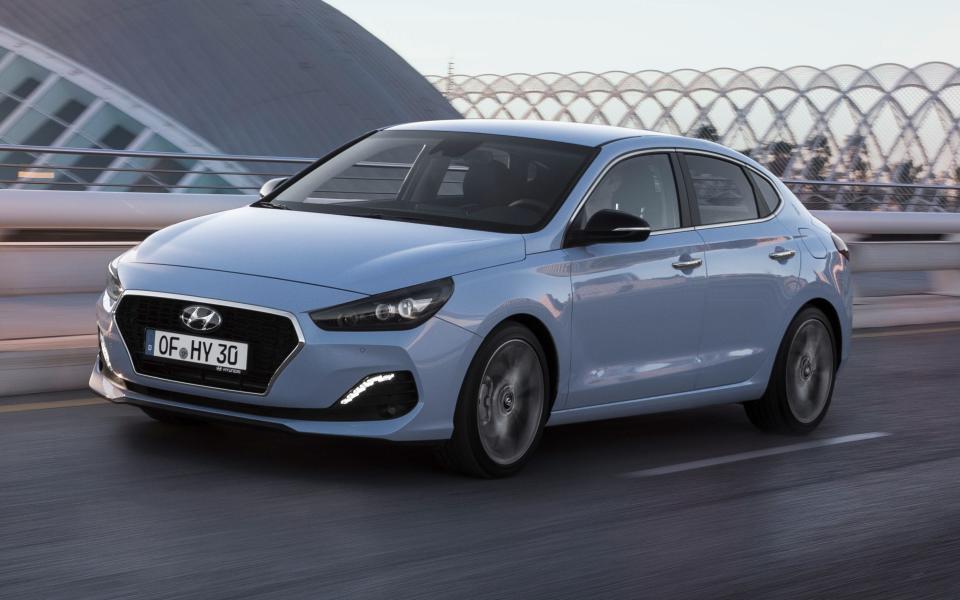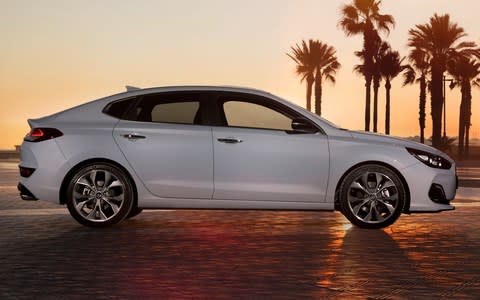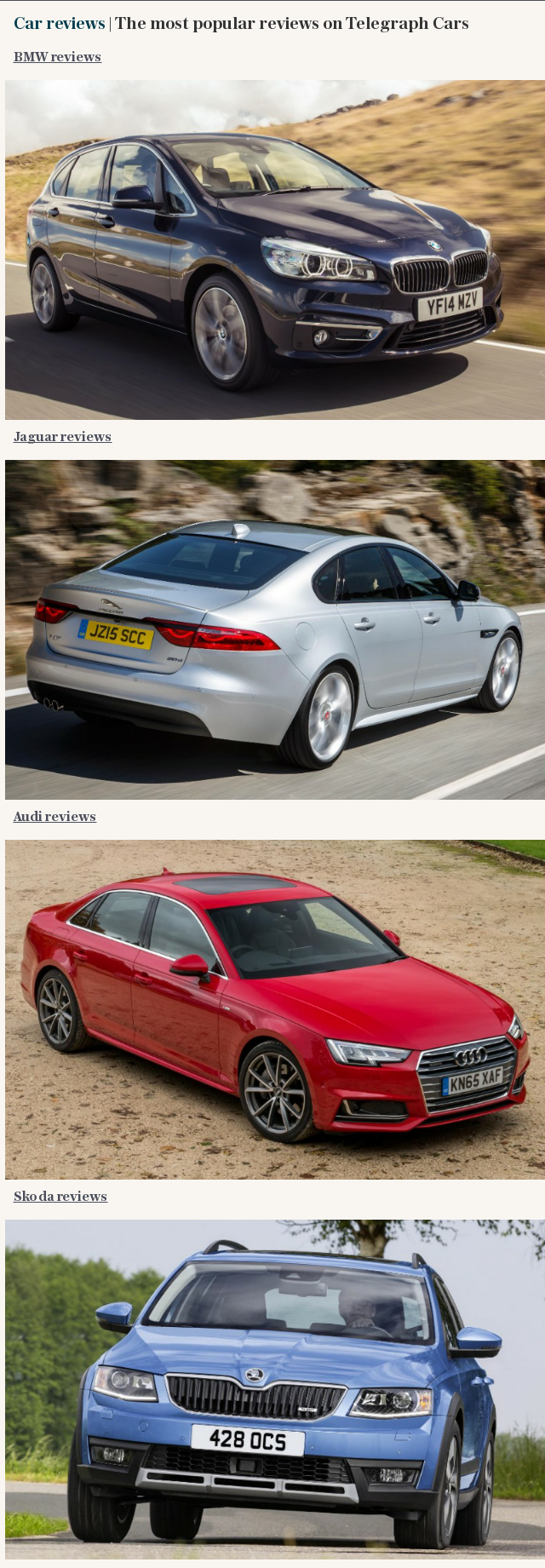Hyundai i30 Fastback review: a five-door coupé that won’t break the bank

Although an oxymoron of sorts, the four-door coupé has slowly wormed its way into acceptance since the format was first trialled on the Mercedes CLS of 2005. What we have in the new Hyundai i30 Fastback is the inevitable next step: a five-door coupé.
But hang on, isn’t a car with five doors simply “a hatchback”? Well, yes and no. You see, Hyundai already builds a five-door i30 hatchback and so this new variant needed an equally new description. So a Fastback five-door coupé it is.
Think of an Audi A5 Sportback or BMW 4-series Gran Coupé shrunken in the wash and you have an idea of what Hyundai is going for here. It even admits that the C-pillars and rear windscreen have been inspired by the premium segment, although neglects to mention that rear visibility is seriously compromised as a result.
How successful the design is depends where you look. In dead profile the 25mm lower roofline than an i30 hatchback and the upward kick of the integrated rear spoiler appear well balanced and rather fetching, but from the rear the new design borders on being tall and stubby, although this is probably dependent on colour to some degree (our test car was in red and didn’t look nearly as convincing as the pale grey car in the pictures).
To the uninitiated the front of the car might mirror any other i30, but actually the height of the grille has been reduced and a lower air intake incorporated into the new bumper in an effort to make the car look wider.

To go with the sportier looks Hyundai has made a few tweaks to the chassis to make the car feel more dynamic to drive, including a 5mm reduction in ride height and suspension that’s been stiffened by 15 per cent.
The two engines are both of the turbocharged petrol variety, kicking off with a 1.0-litre three-cylinder with 118bhp, while the flagship is the 1.4-litre four-cylinder with 138bhp. Both come as standard with a six-speed manual gearbox, but a seven-speed dual-clutch automatic can also be paired with the larger unit. Diesel engines are likely to follow.
Inside there’s a fraction less headroom for those in the rear, noticeable only if you want to lean all the way back to the headrest. Legroom is similar to what you’ll find in a Volkswagen Golf, although because the i30’s floor is almost flat getting three people in is that bit easier.
By definition fastbacks like this can be either saloons such as the Mazda3 Fastback, which serves as the i30’s biggest rival, or hatchbacks. By opting for the latter Hyundai ensures that the 450 litres on offer is easy to access, with the only black mark being a high load lip. For context, that volume put it between the 395-litre i30 hatchback and 602-litre Tourer (estate), as well as 30 litres ahead of the aforementioned Mazda. As you’d expect it’s possible to fold the rear seats flat in a 60/40 split to extend the load bay, a process which leaves a completely flat floor.

Our test car was fitted with the 1.0-litre turbo, which in other applications has shown itself to be a little ordinary compared with similar engines offered by Ford, Volkswagen and Vauxhall. That’s the case here too, for while impressively smooth the performance never feels much more than adequate. The 0-62mph time of 11.5 seconds kind of says it all really. Both the 54.3mpg the car recorded in EU fuel tests and the 42mpg we managed are behind what rivals deliver, too.
To drive, the i30 Fastback is competent, grippy and smooth, but the moderately stiffer set-up has not created a car that’s going to put a smile on your face in the same way that a Mazda3 will.
As with any i30, what the Fastback does best is soothe away big distances with its refined ride and thoughtfully designed and well-finished interior. The central 8-inch touchscreen is excellent too, whether you want to use Hyundai’s software or plug your phone in to make use of Android Auto or Apple Carplay.
Plus being a Hyundai it’s packed with equipment, with the base-level SE Nav coming with wireless phone charging, a rear view camera and parking sensors, electric lumbar support and 17-inch alloys.

Premium models add to this with an electronic parking brake in place of the standard manual item, dual-zone climate control, an electrically adjustable heated driver’s seat, front parking sensors, 18-inch alloys and LED headlights. Premium SE then adds a panoramic sunroof, leather seats and a heated steering wheel.
Safety equipment is comprehensive; all models have autonomous emergency braking, lane departure warning and hill hold assist, while blind spot monitors and rear cross traffic alert appear on Premium spec and above. Then there’s Hyundai’s hassle-free ownership package, which includes a five-year unlimited-mileage warranty, five-year roadside assistance and seven-year subscription to live traffic information. You can’t say fairer than that.
Prices start from £20,305 for a 1.0-litre in SE Nav as tested. That’s a reasonable £500 more than the equivalent hatchback, and puts it at level pegging with the Tourer estate. Assuming you’re set on buying an i30 in the first place, which of the three you choose will depend on your priorities, but with such a modest premium and the lure of that “coupé” style this Fastback might well find its own little niche.
THE FACTS
TESTED 998cc three-cylinder turbo petrol engine, six-speed manual gearbox, front-wheel drive
PRICE/ON SALE From £20,305 (as tested £22,105)/now
POWER/TORQUE 118bhp @ 6,000rpm/125lb ft @ 1,500rpm
ACCELERATION 0-62mph in 11.5 seconds
TOP SPEED 117mph
FUEL ECONOMY 47.1mpg/54.3mg (EU Urban/Combined). On test 42mpg.
CO2 EMISSIONS 120g/km
VED £165 first year, then £140 per year
VERDICT As with any i30, this new Fastback is a great option if your priorities are value, comfort, equipment and a hassle-free ownership experience. It’s just a shame Hyundai couldn’t have injected a bit more interest into the driving experience.
TELEGRAPH RATING Three out of five stars
For tips and advice, visit our Advice section, or sign up to our newsletter here


 Yahoo Finance
Yahoo Finance 